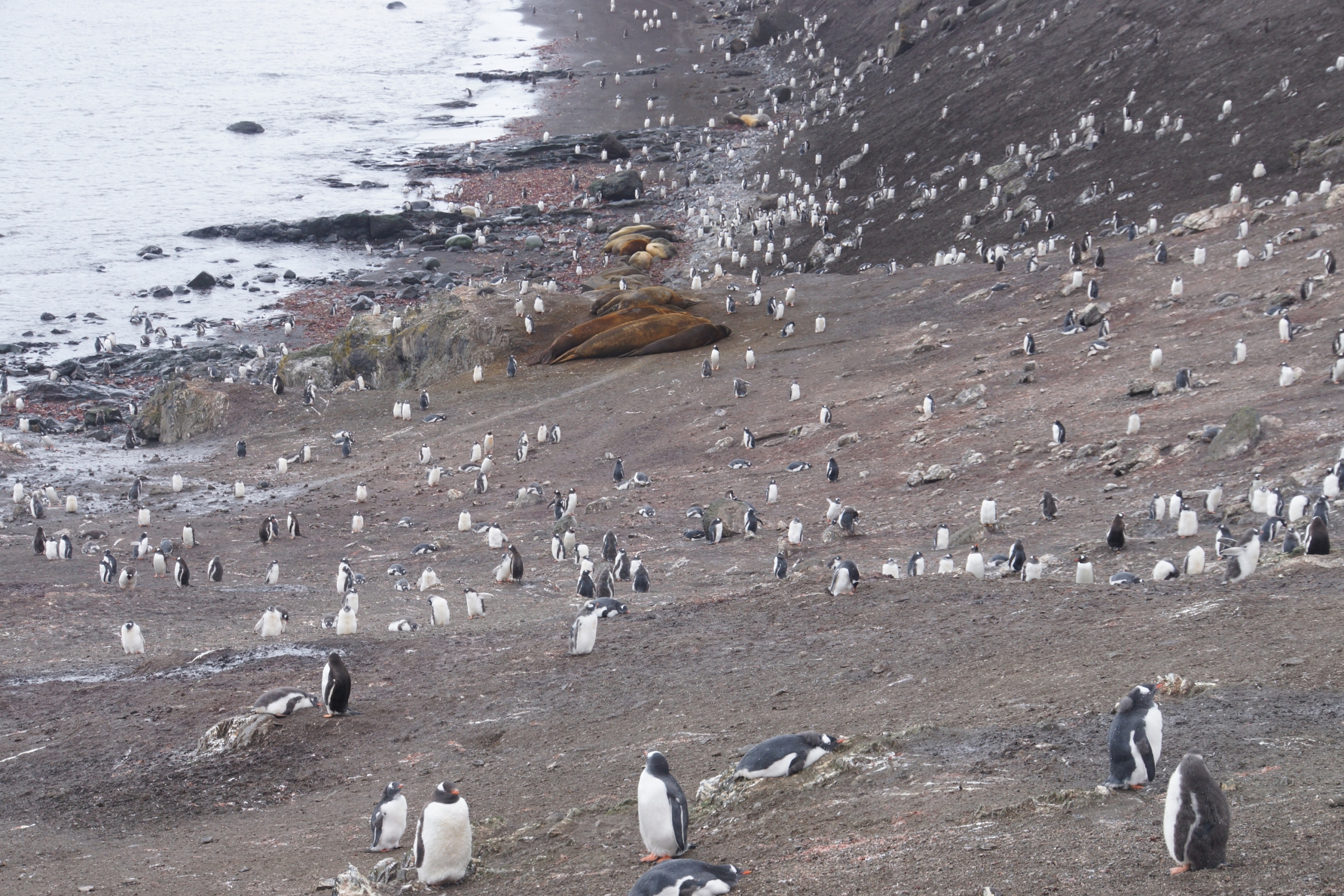Deception Islands
After an early wake-up call we started the day with navigating the Plancius right through Neptunes Bellows and into the caldera of Deception island. What an impressive feeling to be sailing into a volcano. Right after breakfast we landed at Whalers bay, where we could witness a huge amount of remains from the Norwegian whaling station from 1906 and from later scientific work by the UK. The volcanic landscape here was also special indeed, nearly monochromatic, and gave the historic remains a special background setting. We went also for a little hike up the Neptune’s window, the place which is supposed to be the first one from which the Antarctic continent have ever been seen. We did not see that far that day, but still enjoyed the view from the steep cliffs.
Several tough guys met for a little polar swim towards the end of the landing. The warming effect of the volcano was non-existent, but the still the swim was highly appreciated by the little number of brave hearts.
Livingston Islands
In the afternoon we landed, divided into three groups, at Hannah Point on Livingston Island. The dense population of Gentoo and Chinstrap penguins made this an incredible last outing of our voyage. The green hill sides and the presence of huge numbers of moulting Elephant seals were also showing us that we had already moved a bit northwards into s slightly warmer climate. We moved single file through the colony and watched the penguin’s behavior for a last time, before we reached Walker Bay were we got picked up again: the Drake Passage ahead of us!
The predicted wind and swell had arrived and with it an increase in the motion of the ship. For many of us this meant a very disrupted sleep as we were slid from one end of our bunks to the other.
Drake Passage
No trip to Antarctica feels complete without at least a bit of rough weather on the infamous Drake Passage, and today we got a glimpse into why this body of water has the reputation of being the roughest in the world. The wind in the morning was blowing a brisk 30 knots, and progressively increased throughout the day to over 50 knots by lunchtime. The swell gradually picks up as well, and outside the ship’s windows you can see waves’ crests blown violently into spray as everything – including some passengers – bounce about the Plancius. As our ship bobbles amongst the waves we really start to realise that we are just a very small ship in a very large ocean! Celine gave for those who were not confined to their cabins a lecture on penguins in the morning, in both French and then in English.
The rough weather continues in the afternoon as the Plancius’ progress is slowed to less than seven knots by the strong head wind. We are forced to change our course in order to better navigate the weather, but we are getting nearer and nearer to the entrance of the Beagle Channel and the lee of the South American continent. Frozen Planet, the fantastic David Attenborough narrated BBC documentary about the Polar Regions, is on offer in the Observation Lounge after lunch.
Later on in the afternoon we are called by deck to return the beloved rubber boots that served us so well during our excursions on the peninsula. By the time we gather in the early evening for a toast to the voyage, we have finally approaching the Beagle Channel. The Plancius awaits at the entrance of the Beagle for the Argentinian Pilot who will board
in the early morning and navigate the vessel to Ushuaia and, sadly, the final destination of our voyage.
Thank you Oceanwide Expedition and crew for this gorgeous trip. We allways felt very safe, we saw and learnt a lot about Antarctica. And everything was perfectly organized – and since a German says this – it should be true!










